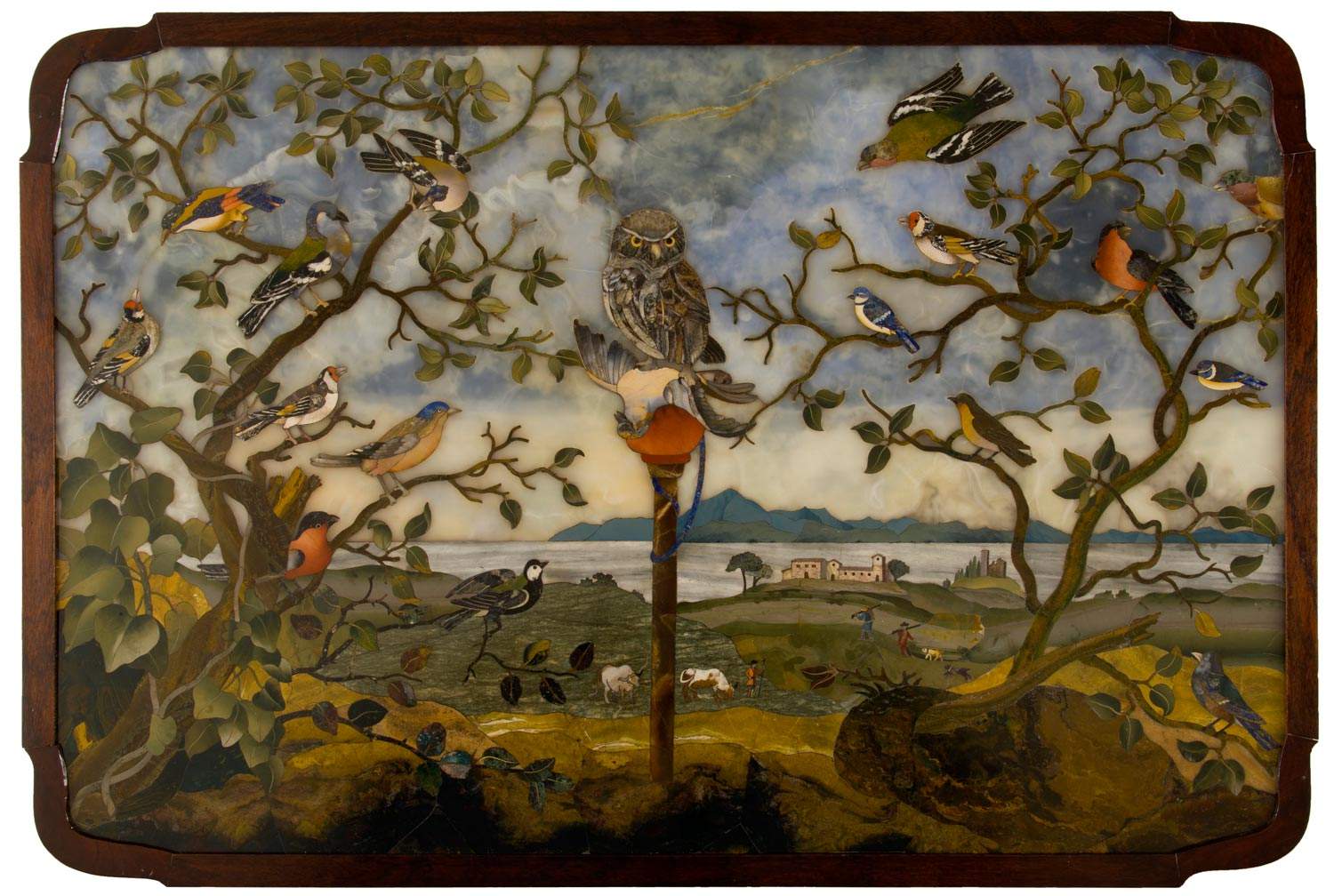Important acquisition for the Museo dell’Opificio delle Pietre Dure: a tabletop depicting Owl and Birds in a Landscape, a gift from Marchesa Donella Torrigiani Torelli, enters the institute’s collections. According to the museum, it is an “extraordinary new acquisition.” The work belonged to the marquise’s maternal family, the Venturi Ginori Lisci. The work was moved to Florence, to Palazzo Torrigiani, several decades ago, coming from a country residence.
In terms of stylistic features and technique of execution, the table top is believed to be referable to the period of Ferdinando II de’ Medici: his long reign (1621-1670) marked an era of fervent activity for the Manifattura, of which, moreover, not many examples remain in Florence, the Grand Duke preferring to destine much of its production “to other great potentates of Europe,” as his contemporary Filippo Baldinucci informs. The intrinsic beauty of the table is thus to be combined with the added value of returning to Florence and the Opificio’s collections an example of that brilliant period of creativity. The table top depicts in the center an owl tied to a staff (used as a lure for hunting) surrounded by birds in a landscape: the model for the composition, is a painting from the second decade of the seventeenth century by the then very famous Flemish painter Frans Snyders, a specialist in hunting scenes and a collaborator in Antwerp of Rubens. The owl, which here triumphs over the wood pigeon, is a symbol of wisdom, as it was already in Greek literature (the subject ties in with a fable by Aesop that urges people not to despise the advice of those who warn: the birds get entangled in the mistletoe of the trees, despite the owl’s warning them of danger).
In the seventeenth century still lifes were the subject of collector interest, and the introduction into the landscape of some details not found in the Flemish artist’s work allows the scene to be set in the Tuscan countryside. It cannot be ruled out that the subject chosen for the table may in this case be charged with a symbolic meaning, alluding to the commissioner or recipient of the work (in fact, it should not be forgotten that at the time of Ferdinand II the grand ducal workshops also satisfied the requests of illustrious buyers).
“The donation represents a great privilege and reason for pride for the Opificio delle Pietre Dure,” comments the institute, “because it testifies to the close ties that have always bound the Institute to Florence and its territory. The Opificio Museum, in fact, represents more than any other the artistic history of the Grand Duchy, and its rich collection is the fruit of three centuries of prestigious semi-precious stone work, which made the ancient Galleria dei Lavori internationally famous and was the pride of the court since 1588.”
The table top can be admired during the opening hours of the Museo dell’Opificio delle Pietre Dure (Monday through Saturday, 8:15 a.m. to 2 p.m.), starting with the upcoming reopening established by government orders.
Pictured: Table top with owl and birds in a landscape (c. mid-17th century; Pietre dure and tenere; Florence, Museo dell’Opificio delle Pietre Dure)
 |
| The Museum of the Opificio Pietre Dure acquires an important table from the 17th century |
Warning: the translation into English of the original Italian article was created using automatic tools. We undertake to review all articles, but we do not guarantee the total absence of inaccuracies in the translation due to the program. You can find the original by clicking on the ITA button. If you find any mistake,please contact us.